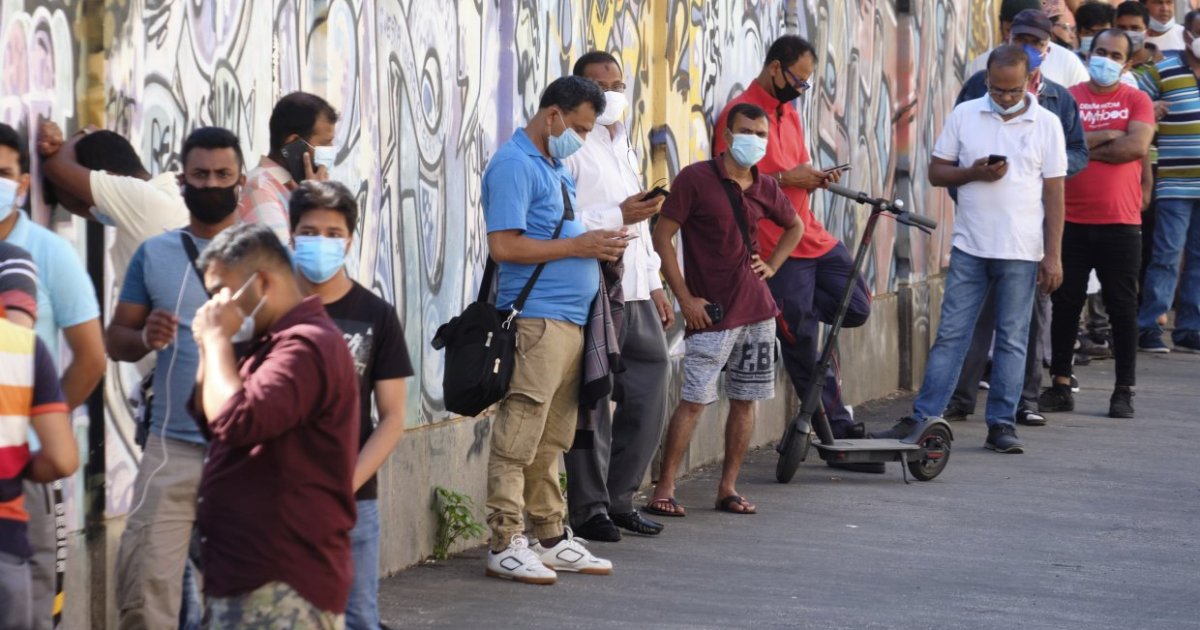Bengali workers constitute about 22% of the total population of Italian Monfalcone (French)
Workers at the Dar Al Salam Islamic Cultural Society in Monfalcone, Italy, were recently surprised by an envelope of unknown origin containing burned pages from the Holy Qur’an, in an incident that raised concerns among Muslims living in this coastal city overlooking the Adriatic Sea.
According to the British newspaper "The Guardian" published on Sunday, the attack came shortly after the mayor of Monfalcone (the far-right Anna Maria Sescente) banned prayers in the building located on Duca d'Aosta Street.
Read also
list of 4 itemslist 1 of 4
An Italian party seeks to ban the construction of mosques
list 2 of 4
Italy is paving the way for the institutionalization of Islam, but the Muslim community is conservative
list 3 of 4
An agreement paves the way for official recognition of Islam in Italy
list 4 of 4
An Italian official calls for banning Muslims from entering his country
end of list
“It was painful, a serious insult that we never expected,” said association president Bo Konaté. “But it was no coincidence. The message was a threat, resulting from a hate campaign.”
The population of this city exceeds 30 thousand people, in a country suffering from a rapid decline in the birth rate.
The city's population growth is due to the shipyard owned by the giant Fincantieri, whose outsourcing over the past two decades has led to a huge influx of foreign workers, most of them from Bangladesh.
The numbers of Monfalcone's Bengali Muslim community have risen dramatically after workers' relatives joined them through family reunification programs - which the city's mayor wants to restrict - and through their Italian-born children.
The number of Bengali Muslims is estimated at about 6,600 people out of the total population of Monfalcone, equivalent to 22% of the total population, according to figures provided by Siscent during an interview with the British newspaper “The Observer”.
For his part, Enrico Puglia, the left-wing councilor for the wider Friuli-Venezia Giulia region, said: “Without the contribution of the foreign community, Monfalcone would have turned into a ghost town.”
The number of Muslims in Italy is estimated at about 2.6 million people, which constitutes 4.3% of the population, and 44% of them hold citizenship, while the rest retain the nationalities of the countries from which they originate.
Mayor Monfalcone Extreme
Since winning her first term in 2016, Siscent has pursued an anti-Islamic agenda in the town located in the Friuli-Venezia Giulia region (northeast), near the Gulf of Trieste.
In 2022, the political party Siscente was re-elected, supported by the "League" party led by Matteo Salvini, and the "Brotherhood of Italy" party led by Prime Minister Giorgia Meloni, which adopts an anti-immigration policy.
One of Siscent's first policies was to remove the benches in the main square, claiming that they were mainly used by immigrants. In the summer of 2023, Muslim women were banned from wearing the burkini (a more modest beachwear outfit) on the beach.
Sisint tried to limit the number of foreign children in schools, while cricket - which is very popular among Bangladeshis - was canceled from the sports festival.
In November 2023, Sisint imposed a ban on prayers at the building of the Dar Al Salam Islamic Cultural Society and the Islamic Cultural Center in the city, claiming that Muslims violated urban planning rules because the buildings were intended for commercial use and not for worship.
The ban came after a proposal made by the Italian Meloni Brothers group, which has long criticized "Islamization" in Europe, to close hundreds of Muslim prayer places that are not located in mosques nationwide.
On 23 December 2023, about 8,000 people protested against the move and against Cysint's anti-Islam campaign, which many believe is being used to boost its image in hopes of running in the European elections in June 2024.
Monfalcone is the city of ships
As for Monfalcone, it is famous for being an industrial center crowded with shipyards, chemical factories, oil refineries, and iron and steel factories, which were rebuilt after the severe damage they sustained in World War I.
Historically, Monfalcone had several fortified villages called castelleri, and after the founding of the Roman city of Aquileia (181 BC) some thermal buildings were erected on the hills, known as the Insulae Clarae.
After the dominance of the Ostrogoths, Byzantines, Lombards and Franks, the Patriarchs of Aquileia took control of Monfalcone starting in 967. The Venetians occupied it in 1420 after a 3-day siege, and in 1511 it fell into the hands of the French.
After the fall of Napoleon in 1814, it was annexed to the Kingdom of Illyria, which is part of the Austrian Empire, where this region was incorporated into the crown land of Gorizia and Gradiska, which has belonged to the Austrian coast since 1849.
During World War I (1914-1918), this city was captured by Italian forces in 1915, and the shipyards were severely damaged due to fierce fighting, and had to be rebuilt after that.
During World War II (1939-1945), the city was repeatedly bombed and suffered severe damage. It became a center of Italian resistance after the Armistice of Cassibile, and was briefly occupied by Yugoslav forces at the end of the war.
Monfalcone's landmarks are the railway station, which was opened in 1860, and is a crossroads between the Venice-Trieste Railway and the Udine-Trieste Railway.
Source: Al Jazeera + British press

